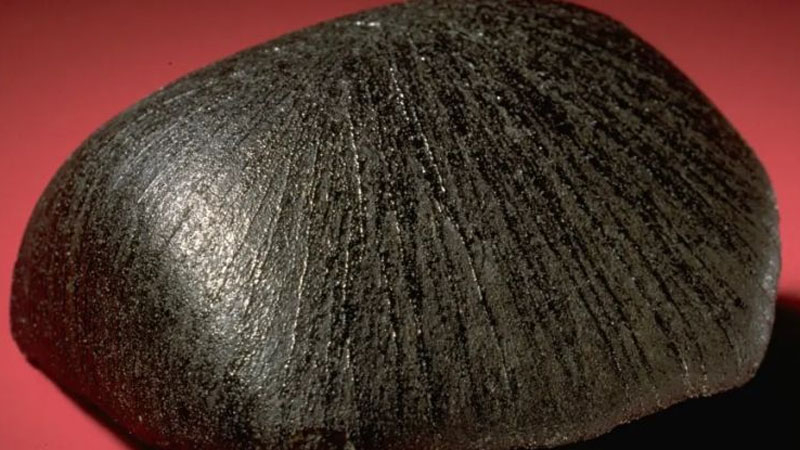Scientists have little doubt that Mars was once “warm and wet.” Water began to leave the planet about 4 billion years ago, and disappeared en masse from its surface 3 billion years ago. In recent years, rovers have been searching for traces of the influence of water on Martian minerals. But sometimes chance brings the opportunity to find a piece of Mars on Earth. Not often, but meteorites fly to us from the Red Planet, and you can look for hints of water on them.

Meteorite “Lafayette”. Image source: NMNH
One of the Martian meteorites has been at Purdue University in the USA for about a hundred years. Its origin is unknown for certain, but this is not so important. What matters is that the mineral can be studied comprehensively using the latest tools. The autopsy showed that the isotope argon-40 was found inside the main mass of the meteorite mineral – iddingsite. It is a suitable substance for radiometric dating. Argon-40 in a reactor under radiation decays to the isotope argon-39, and by the amount of the latter one can determine the initial amount of potassium in the sample. Knowing the half-life of potassium makes it possible to date the sample.
The data obtained allowed us to determine that the minerals in the sample of this Martian meteorite were in contact with water 742 million years ago. By the way, radiometric dating alone was not enough. This rock, called the Lafayette meteorite, was knocked from the surface of Mars by a colossal impact and was subjected to temperature effects, which should have affected the composition of the minerals. After that, he spent about 11 million years in space, traveling around the solar system and being exposed to radiation in the vacuum. This also affected its mineral composition.
Finally, “Lafayette” flew into the dense layers of the Earth’s atmosphere and hit its surface, which also affected it. All these harsh influences had to be eliminated so that they would not confuse the readings. The model specially created for this case showed its best performance, and we can assume that all the negative influences on the Martian mineral were taken into account in this work.
«
In addition to new data on water content on Mars, this work is notable because it creates tools for similar analysis of other meteorites and even samples collected from asteroids. The new technique will expand the collection of data on early processes in the Solar System. This is our cosmic home, and it’s good to imagine on what foundation it is built.